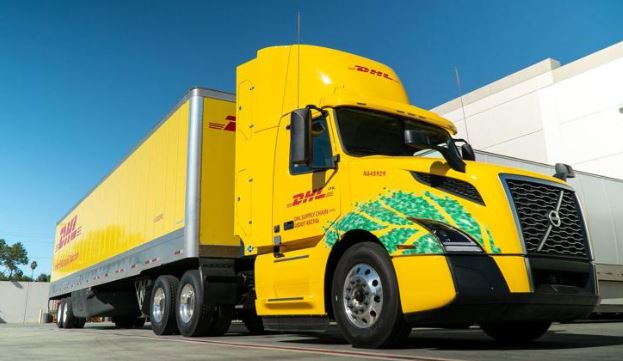DHL Supply Chain announced the deployment of its first Class 8 electric trucks in North America
By 2030, 30% of DHL Supply Chain’s North America fleet will be zero or near-zero emission vehicles
DHL Supply Chain, the Americas leader in contract logistics, announced the deployment of its first Class 8 electric trucks, marking a significant milestone in the company’s commitment to clean and efficient trucking operations. The company currently has two trucks in operation in California and in the coming weeks will take delivery of an additional 11 units to be deployed across Ohio, North Carolina, Pennsylvania, and California. The deployment represents a significant step forward in the company’s commitment to decarbonizing the transportation sector, one of the largest global contributors to greenhouse gas emissions.
The cutting-edge electric truck boasts impressive capabilities, including:
- Zero tailpipe emissions: Electric vehicles (EVs) are considered zero-emission technology (ZET), which means they do not produce any tailpipe carbon dioxide (CO2e) or nitrogen oxide emissions. Each EV that replaces a diesel truck saves, on average, 100 tons of CO2e annually.
- Energy conservation: A six month DHL Supply Chain-led pilot of a class 8 EV truck revealed that the truck consumed on average 50% less energy for the same job compared to its diesel counterpart.
- Extended range: The EV trucks get up to 250 miles on a single charge, covering the needs of many regional haul routes.
- Right-sized charging: Equipped with fast-charging technology and remote monitoring capabilities, the EV trucks enable turnaround times that are aligned with the operational requirements.
- Powerful performance: The EV trucks deliver superior horsepower and torque to their diesel counterparts, ensuring seamless integration into existing operations.
- Improved driver satisfaction: During the pilot drivers shared a preference for EV over diesel due to its ‘quietness’ and low to no vibrations, leading to less fatigue.
“Our commitment to sustainability extends beyond reducing our environmental impact. We see electric trucks as a strategic investment that offers numerous advantages for our company and the communities we serve. From improved efficiency and a better driving experience, to reduced air and noise pollution, electric trucks are the future of transportation,” said Jim Monkmeyer, President of Transportation, DHL Supply Chain.
Fueling green innovation with expertise
DHL has been an early adopter of EV technology, having deployed more than 30,000 light- to-heavy duty EVs worldwide. By being an early adopter, DHL Supply Chain has been able to pilot and learn how best to implement green technologies to enhance productivity and improve operational efficiencies. In 2023 they added 30 new EV yard trucks, totaling 60 vehicles currently in operation in North America; helping to fulfill its commitment to transition away from diesel yard trucks. The company has also continued phasing out LPG powered material handling equipment (MHE) such as forklifts, replacing them with EV MHE.
“We’re building a comprehensive ecosystem around green technologies to support seamless operation, including right-sized charging infrastructure at our facilities and a dedicated team of experts driving continuous improvement. This is not just a truck, it’s a system, a symbol of our commitment to creating a cleaner, more efficient, and more sustainable transportation landscape,” said Monkmeyer.
The addition of electric trucks to its North America fleet follows the announcement of DHL Supply Chain’s global Green Transport Policy aimed at reducing carbon emissions in line with DHL Group’s Sustainability Roadmap. As an initial move, DHL Supply Chain will transition around 2,000 vehicles globally from conventional combustion engines to greener alternatives, including hydrotreated vegetable oil, biogas, electric, or hydrogen. Over the next three years, DHL Supply Chain’s commitment to an additional investment of 200 million euros in fossil fuel alternatives promises to reduce nearly 300,000 tons of CO2 emissions. These savings are equivalent to offsetting the CO2 emissions produced by 2,200 trucks, each driving a daily distance of 500 kilometers over one year. At the outset, the new policy takes investments in 17 countries with the highest emissions footprint.
Category: Cab, Trailer & Body, Electric Vehicles, Equipment, Featured, Fuel & Oil, General Update, Green, News, Products, Vehicles











